Inside the Powder Coating Booth: How Advanced Powder Coating Equipment Improves Efficiency
In any modern coating line, the powder coating booth plays a central role in achieving consistent, high-quality results. As the enclosed environment where powder is applied to parts, it directly affects coating efficiency, overspray control, and workplace safety.
With the advancement of powder coating equipment, today’s booths are no longer just containment structures—they’re engineered systems designed to optimize airflow, automate application, and recover excess powder with precision. This article explores how advanced technology inside the powder coating booth is driving improvements in both production speed and coating quality.
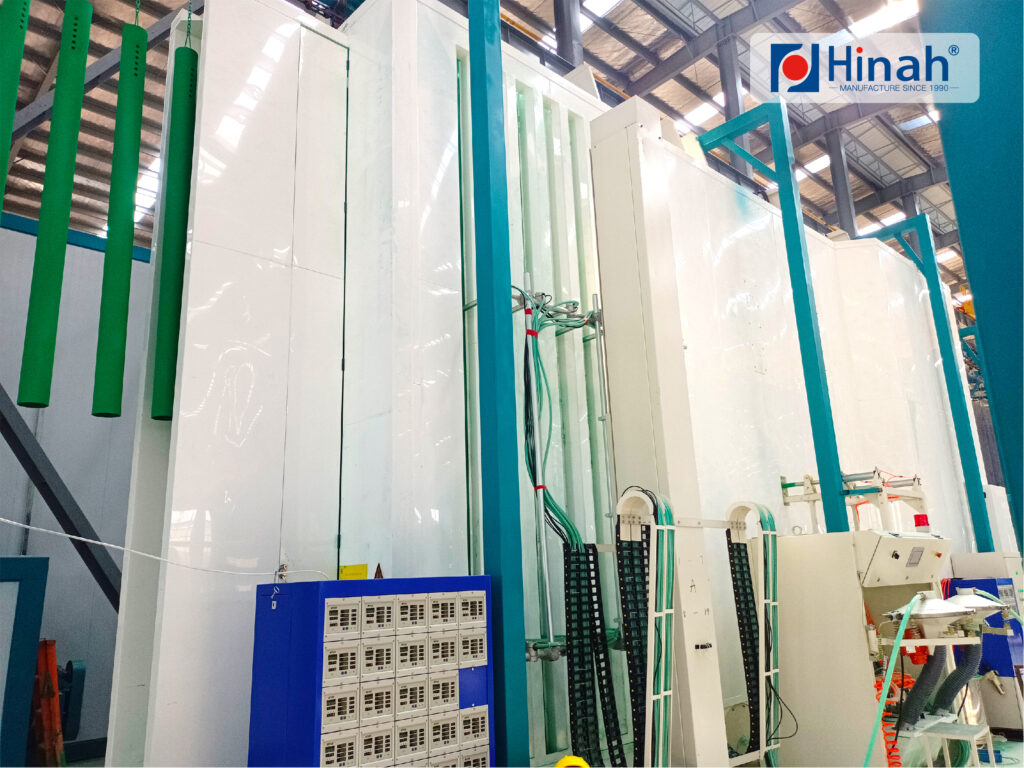
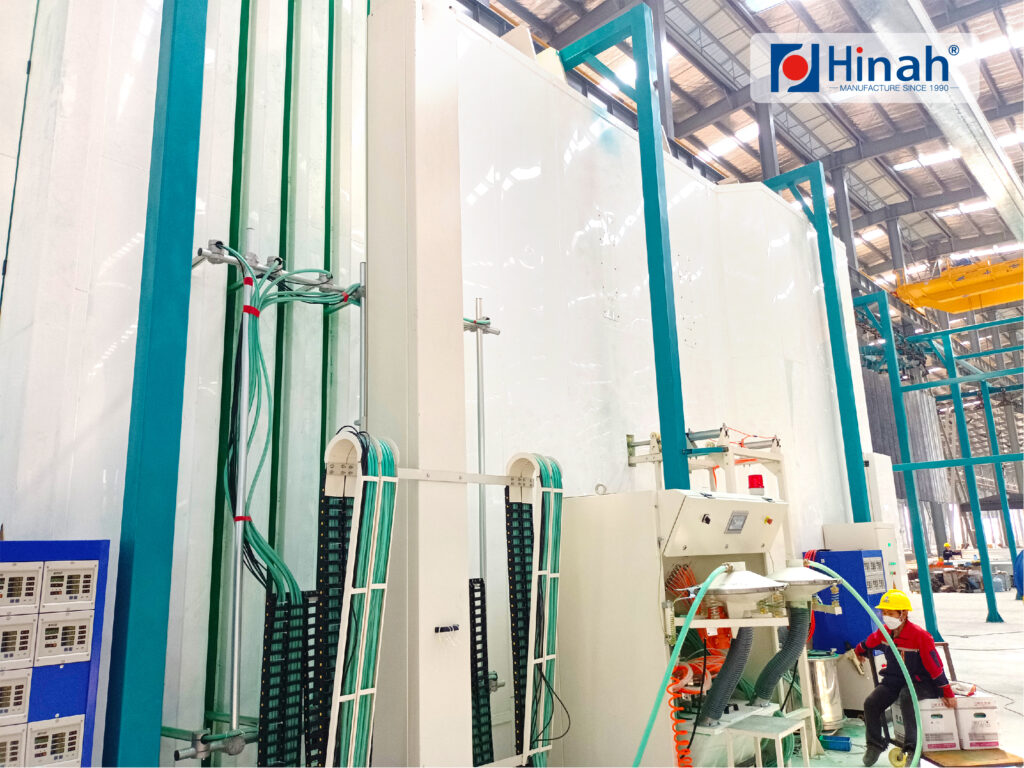
Key Components of a Powder Coating Booth
A well-designed powder coating booth consists of several integrated components that work together to ensure clean operation, efficient coating, and minimal waste. The most critical element is the booth enclosure itself, which can be configured as open-face, closed, or walk-in depending on the production needs. The structure must provide proper containment to prevent powder from escaping into the surrounding work area.
Airflow and filtration systems are equally essential. A high-efficiency exhaust system maintains a constant air balance, capturing overspray and keeping airborne particles under control. Advanced powder coating rooms often include multi-stage filtration units or HEPA filters to maintain clean air circulation and extend the life of reclaimable powder.
Proper lighting is another key factor. Bright, shadow-free illumination inside the booth allows operators or automated systems to apply powder evenly and inspect coverage in real time. Additionally, smooth and easy-to-clean interior surfaces help reduce color contamination and make maintenance more efficient.
Together, these components form the foundation of a high-performance powder coating booth—one that not only supports quality finishes but also contributes to a safer and more productive working environment.
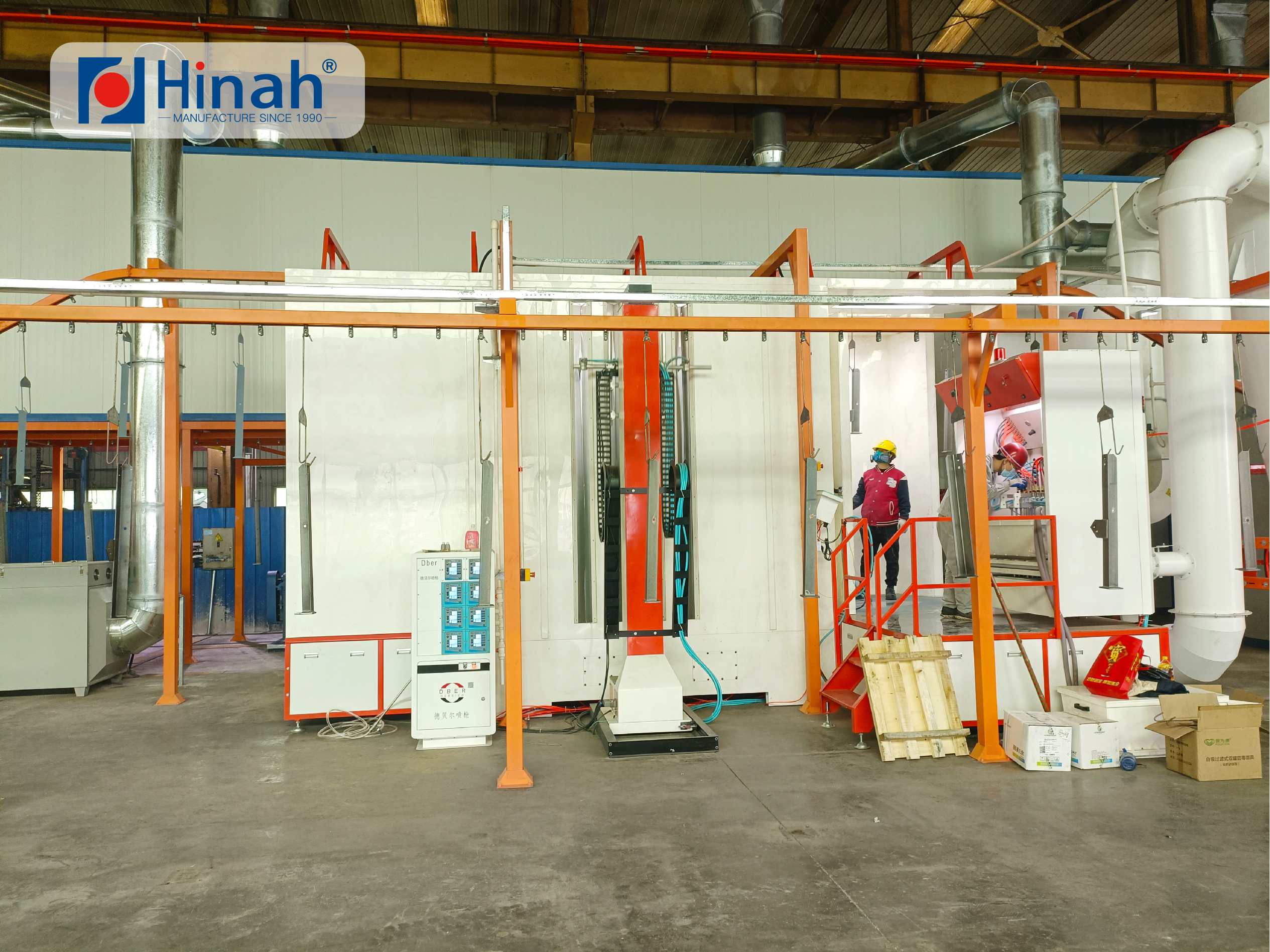
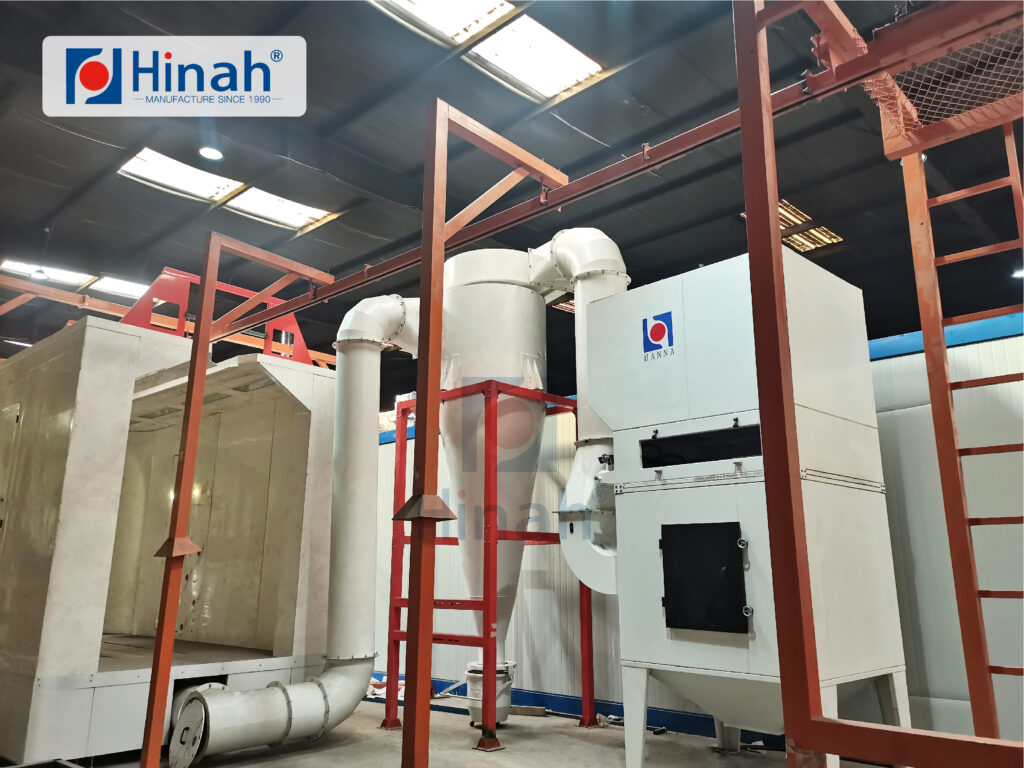
How Automated Powder Coating Equipment Enhances Booth Efficiency
Advanced automation systems integrated into the powder coating booth significantly improve application consistency, reduce waste, and increase throughput. Key benefits include:
- Consistent Coating Quality – Automated spray guns and reciprocators apply powder at uniform speed and distance, minimizing human error and ensuring even film thickness on every part.
- Faster Cycle Times – Programmable logic controllers (PLCs) and robotic arms can be synchronized with conveyor systems to speed up part handling and reduce idle time inside the booth.
- Reduced Powder Waste – Precise control over spray patterns and powder output helps prevent over-application and overspray, lowering material usage and operational costs.
- Quick Color Change Capabilities – Automated cleaning systems allow for faster and cleaner color changes inside the powder coating room, improving flexibility for short production runs.
- Labor Efficiency – Automation reduces reliance on manual labor, freeing up skilled workers for quality control or system monitoring tasks instead of repetitive spraying.
By integrating automation into the powder coating booth, manufacturers can achieve higher efficiency, better repeatability, and scalable production that meets modern finishing standards.
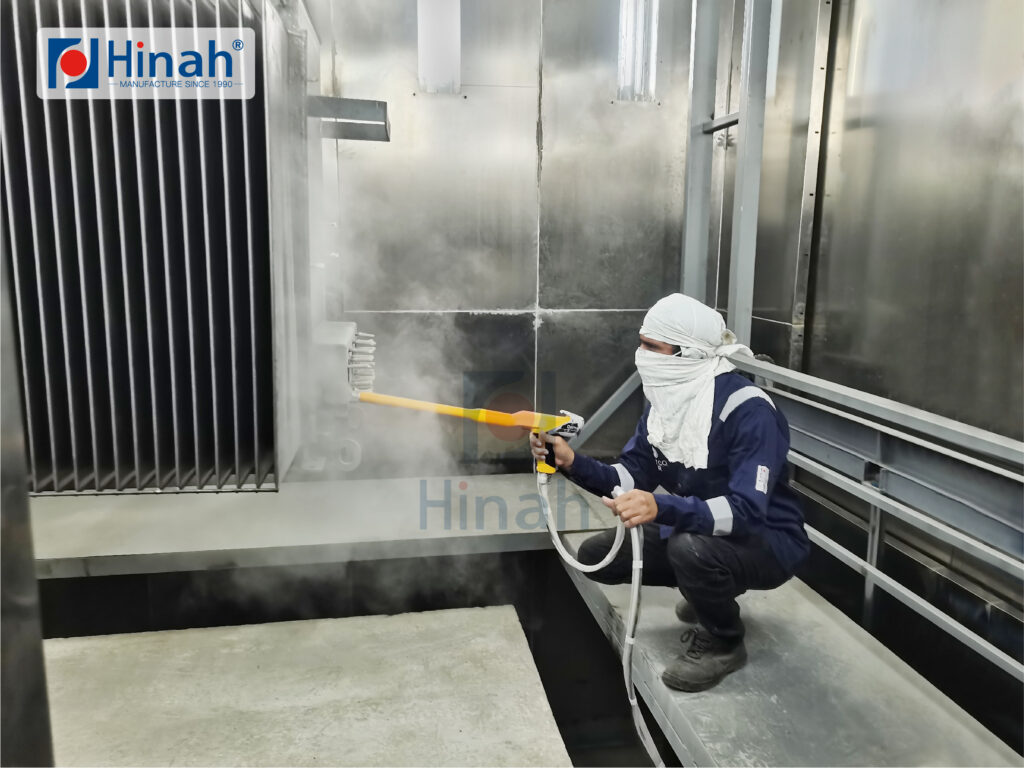
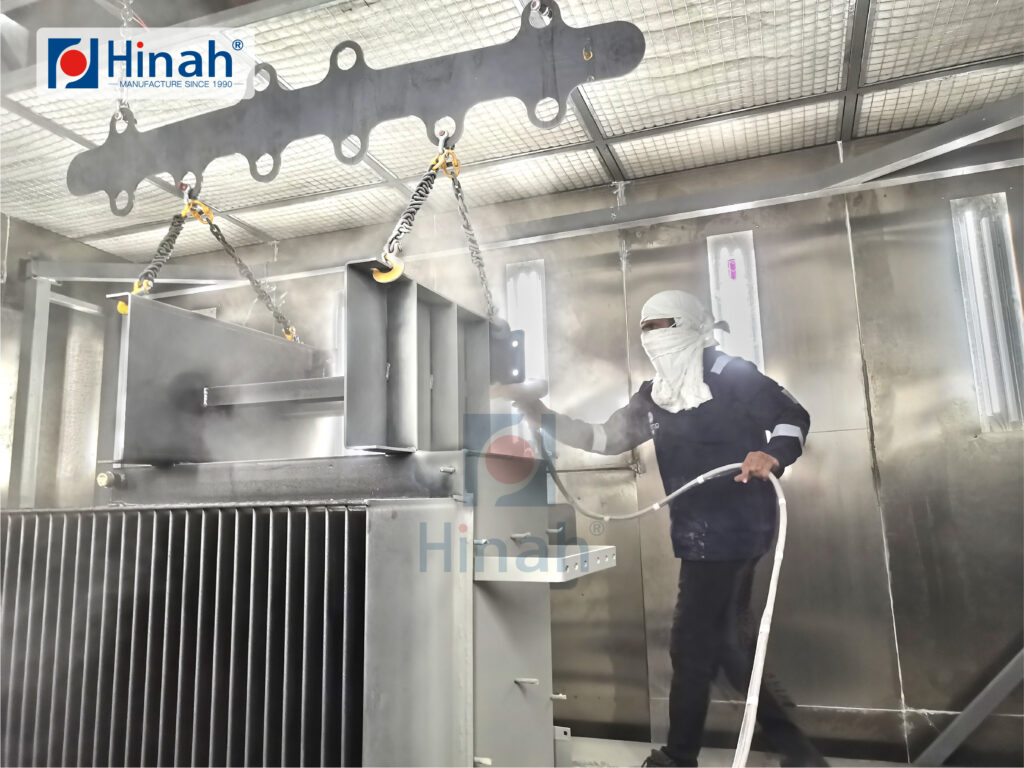
Powder Recovery Systems Inside the Powder Coating Booth
Efficient powder recovery is a vital feature of any modern powder coating booth, directly impacting material usage and overall cost-effectiveness. During the coating process, a significant portion of powder does not adhere to the part on the first pass. Instead of letting this excess material go to waste, recovery systems collect and recycle it for reuse.
There are several types of recovery systems commonly used inside powder coating booths. Cartridge filter systems are compact and highly efficient, capturing overspray through high-performance filters that can be cleaned and reused. Cyclone separators, on the other hand, use centrifugal force to separate powder particles from the air, making them suitable for larger volumes or facilities handling multiple colors.
An advanced recovery system not only reduces powder consumption but also helps maintain a cleaner booth environment, leading to more consistent finishes and reduced downtime for cleaning. In addition, many systems are designed for fast color changes, allowing operators to switch colors without significant contamination risk or extended booth downtime.
By incorporating a reliable recovery system, manufacturers can significantly lower operational costs while promoting sustainability—an increasingly important factor in today’s industrial landscape.
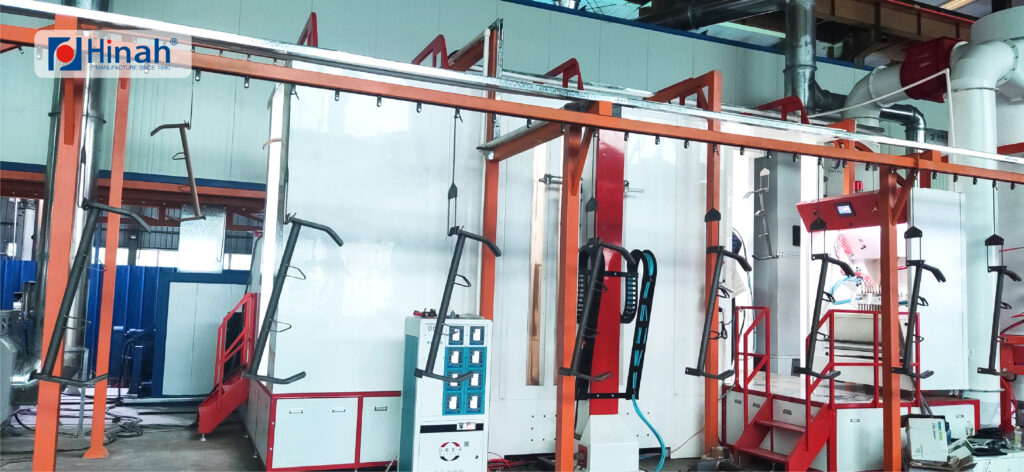
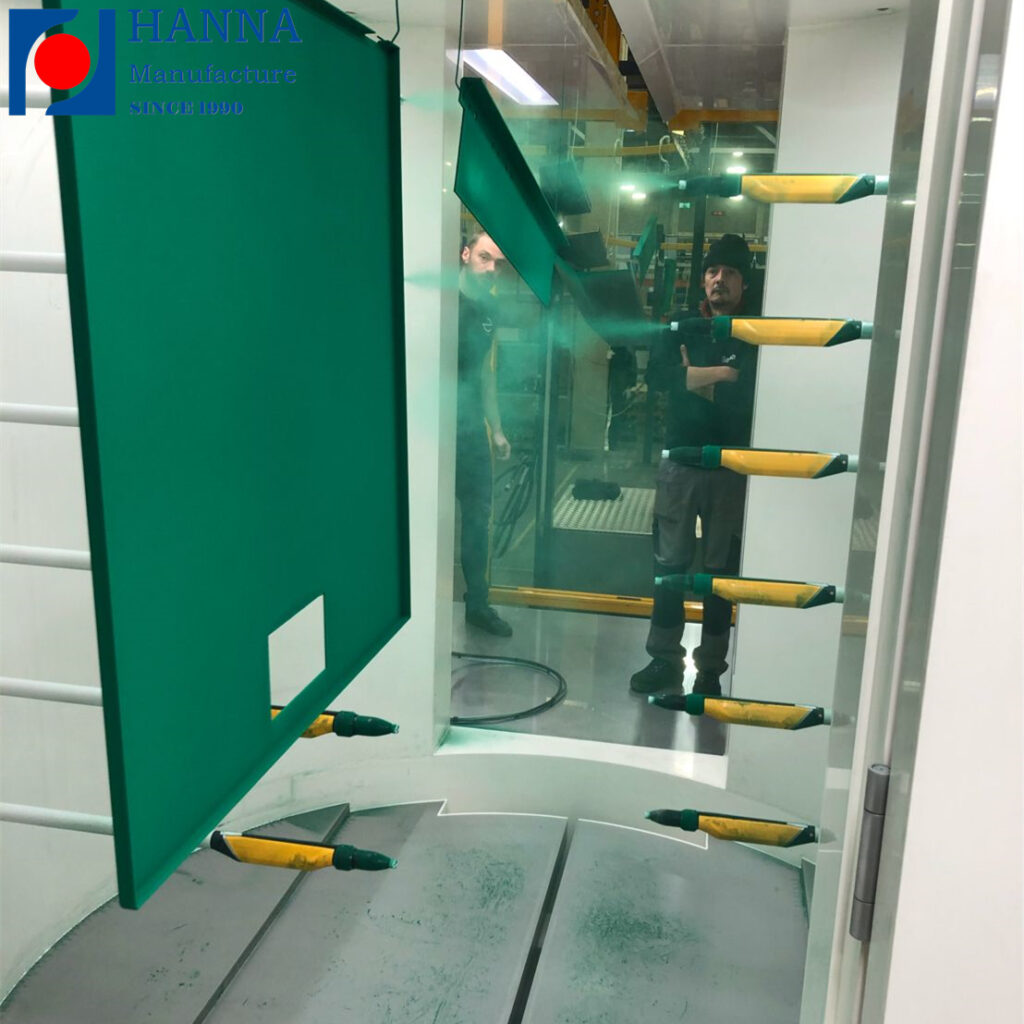
Conclusion
As manufacturers face growing demands for higher efficiency, better finish quality, and lower production costs, upgrading to advanced powder coating booth equipment becomes a strategic investment. From optimized airflow and automated spraying to efficient powder recovery systems, each component plays a role in improving workflow, minimizing waste, and ensuring consistent results.
By choosing the right booth design and integrating modern technology, businesses can streamline their coating operations while meeting safety and environmental standards. In the long run, a high-performance powder coating booth not only boosts productivity but also contributes to a more sustainable and competitive finishing process.

